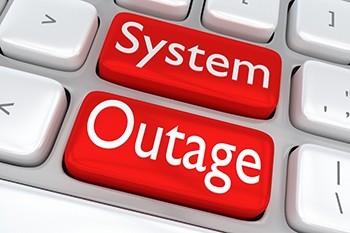Risk comes from not knowing what you are doing. –Warren Buffett
After the economic slowdown, in a survey of managers from companies of various sizes and industries, the managers overwhelmingly reportedthat their primary responsibility was to achieve growth while containing costs. In addition, 78% said they didn’t have the skills to do it!
To achieve growth and contain costs, you need a superior approach to handling risk. But too often people don’t have—or take—the time to manage risk and don’t have the skills to face it rationally.
What are the blind spots around risk? Daniel Goleman’s work on emotional intelligence, provides some insights, with the concept of the “amygdala hijack.” An amygdala hijack is a chemical response in humans to the unexpected and unknown. The amygdala part of the brain has a split second to respond before the rational part of the brain can act. It activates a fight or flight survival instinct. Risk is a perceived threat, and in that split second, we can choose to avoid it instead of engaging in rational thought.
This human response to risk can cause paralysis in organizations, translating into missed opportunities, missed deadlines, and, in the worst-case, total-collapse scenarios. Inadequately planned ways to face and even attack risks can translate into havoc when played out in organizations.
Recently, managers from a variety of business organizations were asked, what prevents you from proactively identifying and mitigating risk? The answers all focused on short- term demands—an urgency to concentrate on present needs, a lack of time and staff, and no process in place to manage risk.
Too often we are putting out fires instead of having effective actions in place to prevent or mitigate the fires. Most individuals and organizations can profit by taking a step down from reactive mode and the attendant, emotional stimulus that keeps us from taking rational action. By managing risk in advance, we are making the most of a situation with efficient, effective, planned actions.
Risk may not seem meaningful because it is intangible and doesn’t impact the work we are doing now. Because risk is unknown, intangible and in the moment, it is easy to say that we lack the time to manage it. Yet we don’t have time to not manage it. In three months down the road we may be asking, why didn’t we see this coming?
It is valuable to change the mindset from risk aversion and the natural fight or flight response to facing risk and accepting the challenge. We don’t want to be like “Chicken Little,” seeing only disaster: the sky is falling. We need to engage with risk in a new way and change the mindset. The actor, Edward Norton, is quoted as saying, “Life, like poker, has an element of risk. It shouldn’t be avoided, it should be faced.” But how do we face it and do so effectively? It helps understand your odds.
Nobel laureate, Daniel Kahneman, whose studies challenged the rationality of human behavior in economics, has noted that, “Courage is willingness to take the risk once you know the odds. Optimistic overconfidence means you are taking the risk because you don’t know the odds. It’s a big difference.”
How do we step into a space where we engage with the odds and reprogram thinking to make risk a positive experience? A good approach is to combine business acumen with creativity. To look at risk—the unknown—with creative activity that helps us to innovate while protecting the plan.
A more curious mindset helps us to engage with risk. Instead of approaching work as a problem, embrace it with child-like curiosity. Sometimes all it takes is asking the right questions. Rather than beginning with, what could go wrong, we first ask and answer: What is it that we want to succeed? What is the plan we want to protect? How do we innovate to insure success?
By proactively avoiding the “amygdala hijack,” we can go ahead and try to reason it out. Prepare, plan, imagine rather than do nothing. In addition to creatively imagining the concerns that could make a plan go wrong, we need to put contingent actions in place, in case the preventive action doesn’t work. Creative thinking helps build a plan to mitigate the damage with triggers for when to activate the contingencies.
The matrix shown above can help you assess the risk management maturity of your organization. Are you still in survival mode with reactive actions and nothing in place for promoting risk management? Within this model, the matrix identifies some of the basic structures that need to be in place to become an increasingly effective risk management organization. As the organization matures in this effort, it moves along these six basic stages:
1. Survival: Reactive, “Best that we can do,” lack of KPIs that address risk
2. Awareness: Basic monitoring, focus on building risk management skills
3. Committed: Common methodologies for issue resolution, processes defined at the “how-to” level
4. Proactive: Internal coaching and facilitation capabilities, processes actively managed by process owners, knowledge-centered support
5. Business Aligned: Capabilities inventoried and mapped against process needs, continuous improvement approach implemented, infrastructure and applications consolidated and aligned with business
6. Business Partnership: new capabilities developed in line with future needs, processes managed as a portfolio of integrated “assets,” predictive monitoring
Where does your organization stand in managing risk and where are the blind spots in engaging in risk discussions? Instead of avoiding these discussions, use potential risk as an opportunity to engage others and innovate for the future. By anchoring creativity with a process and plan for managing risk, you can improve your ability to innovate and improve business outcomes.









